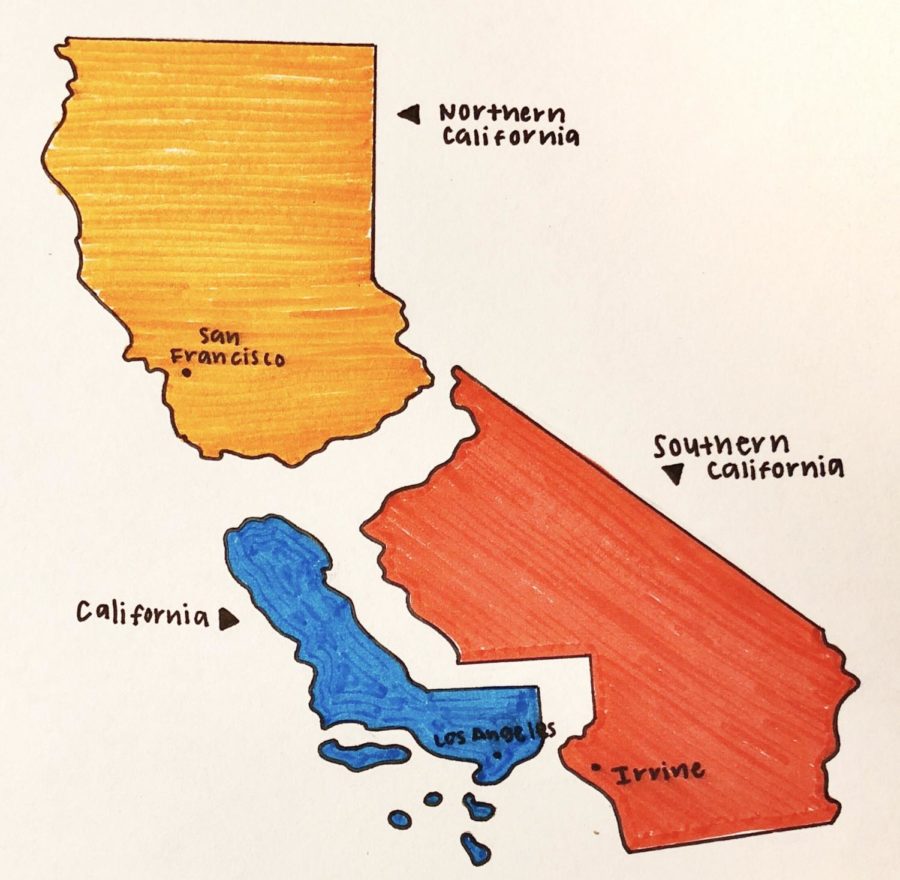Cal • i • for • nia: Noun | A Western State that Could Split
A proposed map for the possible 51st and 52nd states to join the nation makes Orange County a part of Southern California.
Timothy Draper, a politician and native of California, is posing a plan to split one state of California into three: California, Northern California and Southern California. Draper believes this new plan will allow more representation for the people and still keep all previous county boundaries.
Draper’s new plan of three, instead of his previous plan of six, is now going through a petition phase which at least 585,407 registered California voters must sign for the petition to be considered by California’s government, according to a Sacramento Bee article. If his petition reaches the needed amount of signatures by Apr. 23, the design will be placed on a California ballot for voters to decide on in fall of this year. The amount of signatures currently collected is private information.
“The citizens of the whole state would be better served by three smaller state governments while preserving the historical boundaries of the various counties, cities and towns,” Draper wrote on his new proposal.
The split into three states would change many features of the current California systems and government policies.
The University of California System, or UC System, would have to be addressed and reorganized. According to the University of California website, more than 238,000 students and over 190,000 staff members are currently involved in one of the ten campuses. With the creation of two new states, the school’s system would be in need of a name change and organization.
“It would make certain University of California’s really hard to get into,” math teacher Eric Graham said. “For example, if UCLA is by itself…it is going to make it really competitive.”
State border control would change in intensity, especially around the valley region in possible Northern California. Citrus fruits are already banned to cross most state borders, especially in vast vegetation regions, according to the California Department of Food and Agriculture. With more threats of fruit flies, the needed precautions would not be reduced with the splitting of the state.
“I wonder if there will be new laws in each state,” science teacher Michael Tang said. “That means we have to get recertified for our driver’s license.”
Additionally, with over 35 million registered vehicles registered in the state of California, according to California’s Department of Motor Vehicles website, new license plates would be replacing those currently distributed in the current state of California.
Your donation will support the student journalists of Portola High School. Your contribution will allow us to purchase equipment and cover our annual website hosting costs.




